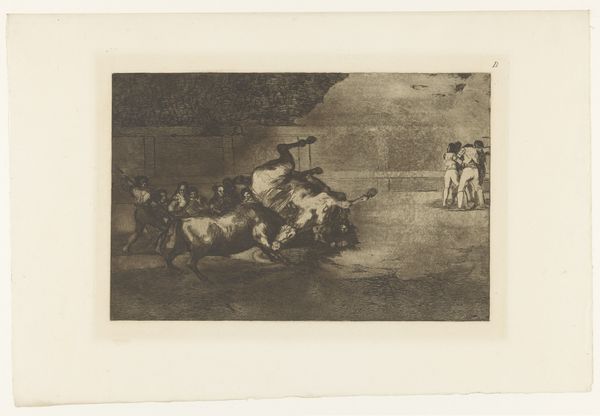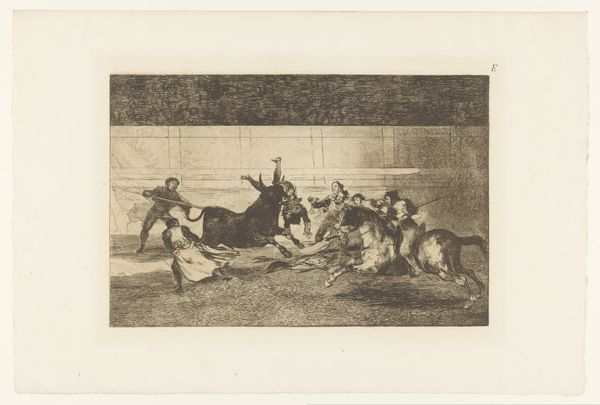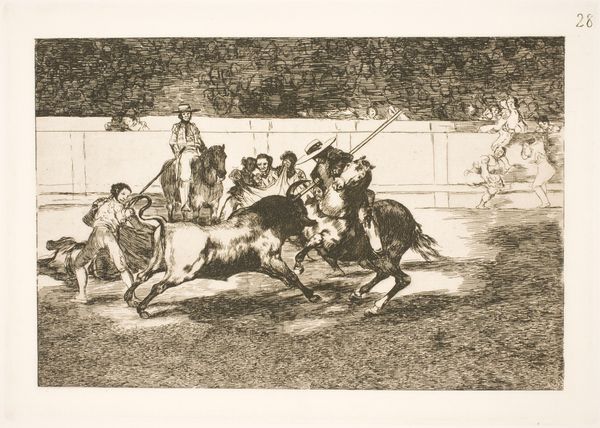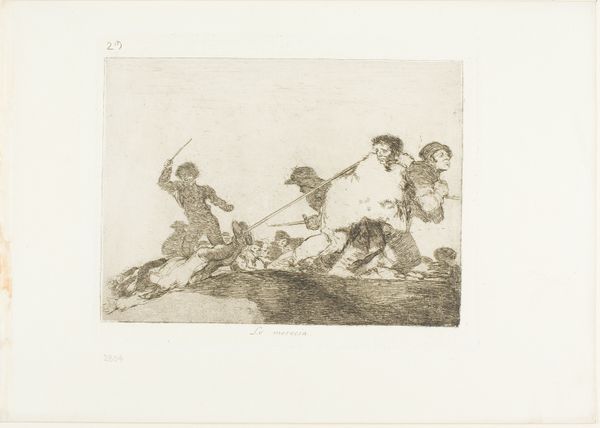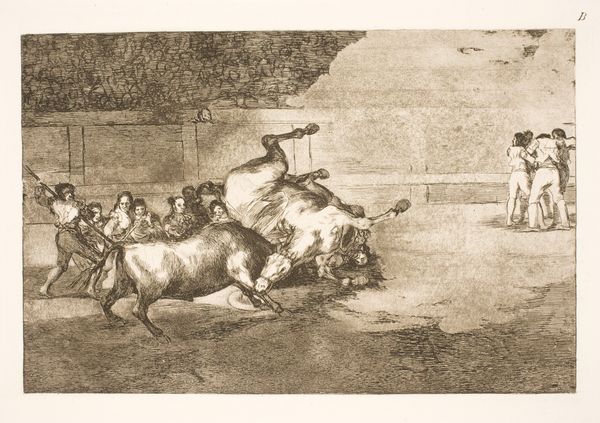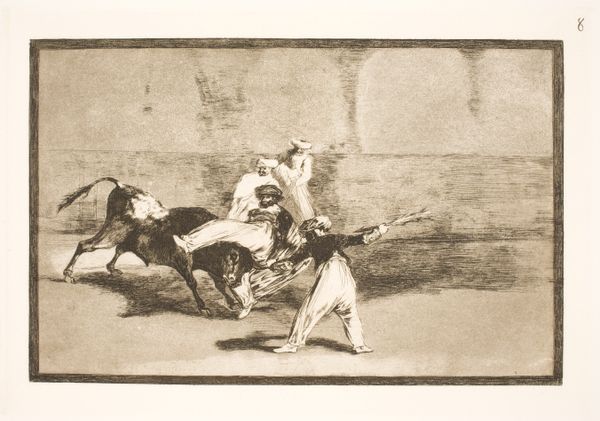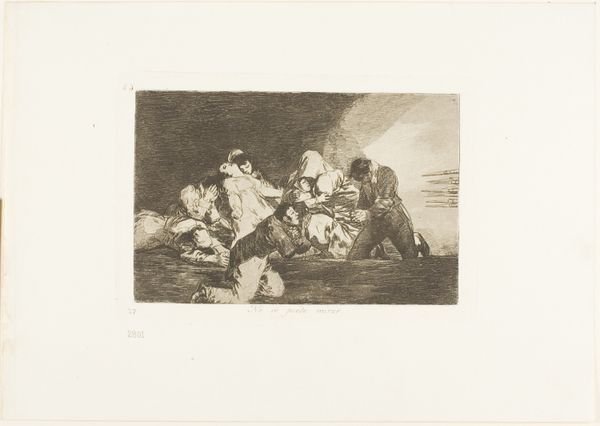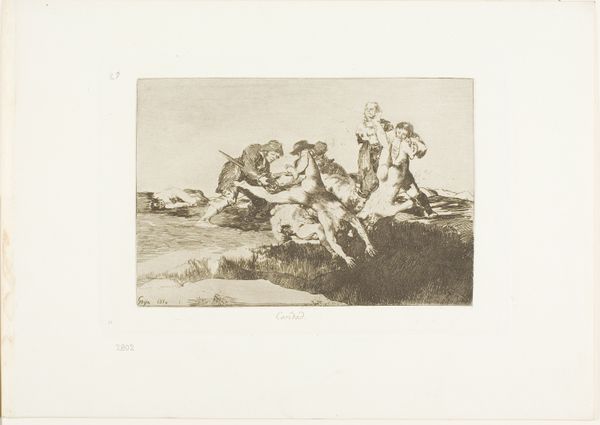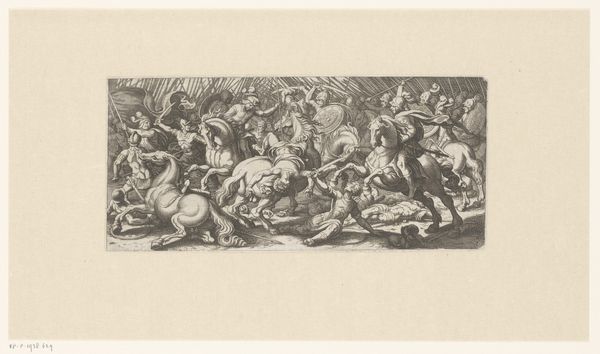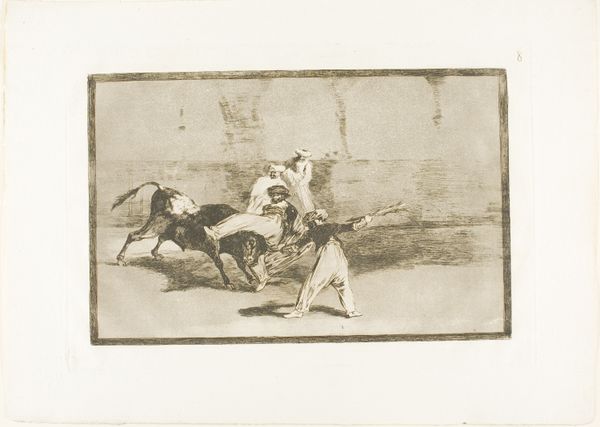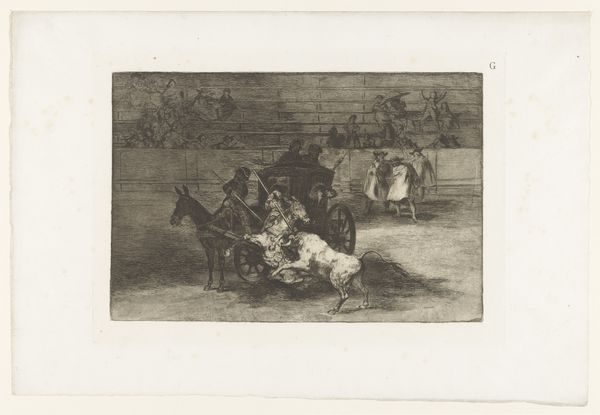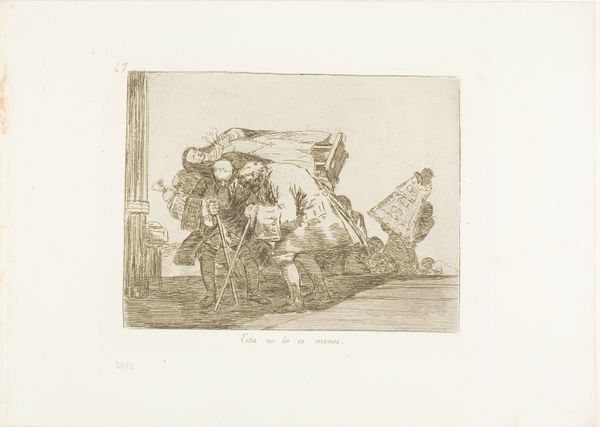
Two teams of picadors thrown one after the other by a single bull, plate 32 from The Art of Bullfighting Possibly 1814 - 1816
0:00
0:00
drawing, print, etching, paper
#
drawing
# print
#
etching
#
figuration
#
paper
#
romanticism
#
genre-painting
#
history-painting
#
realism
Dimensions: 201 × 310 mm (image); 244 × 352 mm (plate); 320 × 445 mm (sheet)
Copyright: Public Domain
Editor: Goya’s etching, "Two teams of picadors thrown one after the other by a single bull," made around 1815, presents a chaotic scene. It's overwhelming, with so many figures tumbling around this central bull. What's going on here? What can we unpack from the imagery itself, and also the circumstances of its making and display? Curator: Well, first consider that Goya created this series, *The Art of Bullfighting*, in his later years, after experiencing the horrors of the Peninsular War. This print, like many in the series, depicts not just the spectacle of the bullfight, but the brutality inherent in it. Look at the overturned carts, the scattering crowds. He's interested in the bullfight as a ritual but he seems very interested in its social impact, who it hurts. Who is served by its perpetuation? Editor: So it's more than just a depiction of a sporting event? Curator: Exactly. The bullfight itself served as a symbolic battleground reflecting broader socio-political struggles. Goya seems to be pointing out that in the theatre of war, as in the bullfight arena, there are people profiting off carnage and death, people positioned safely in the stands while others fight and die. Also note the aquatint technique. He wanted the flat tonal areas, not just lines, so it would feel monumental and stark, a vision for the future, like a mural, not just a small intimate print. Who would these scenes really speak to? Editor: That adds another layer to it. Seeing it as a deliberate social critique gives it much more weight than just entertainment. He has shaped both subject and style into an indictment of... whom exactly? Curator: Well, think about the elites who would have been both patrons and spectators of such scenes. The print becomes a subtle, subversive commentary on the societal structures that perpetuate violence, packaged within the familiar cultural institution of bullfighting. Goya used this image to ask uncomfortable questions about power, spectatorship, and accountability in a society emerging from conflict. The viewer is compelled to confront what it says about them. Editor: I see. It’s like he's using this so-called sport to question those in power. I hadn't considered that before. Thank you!
Comments
No comments
Be the first to comment and join the conversation on the ultimate creative platform.
